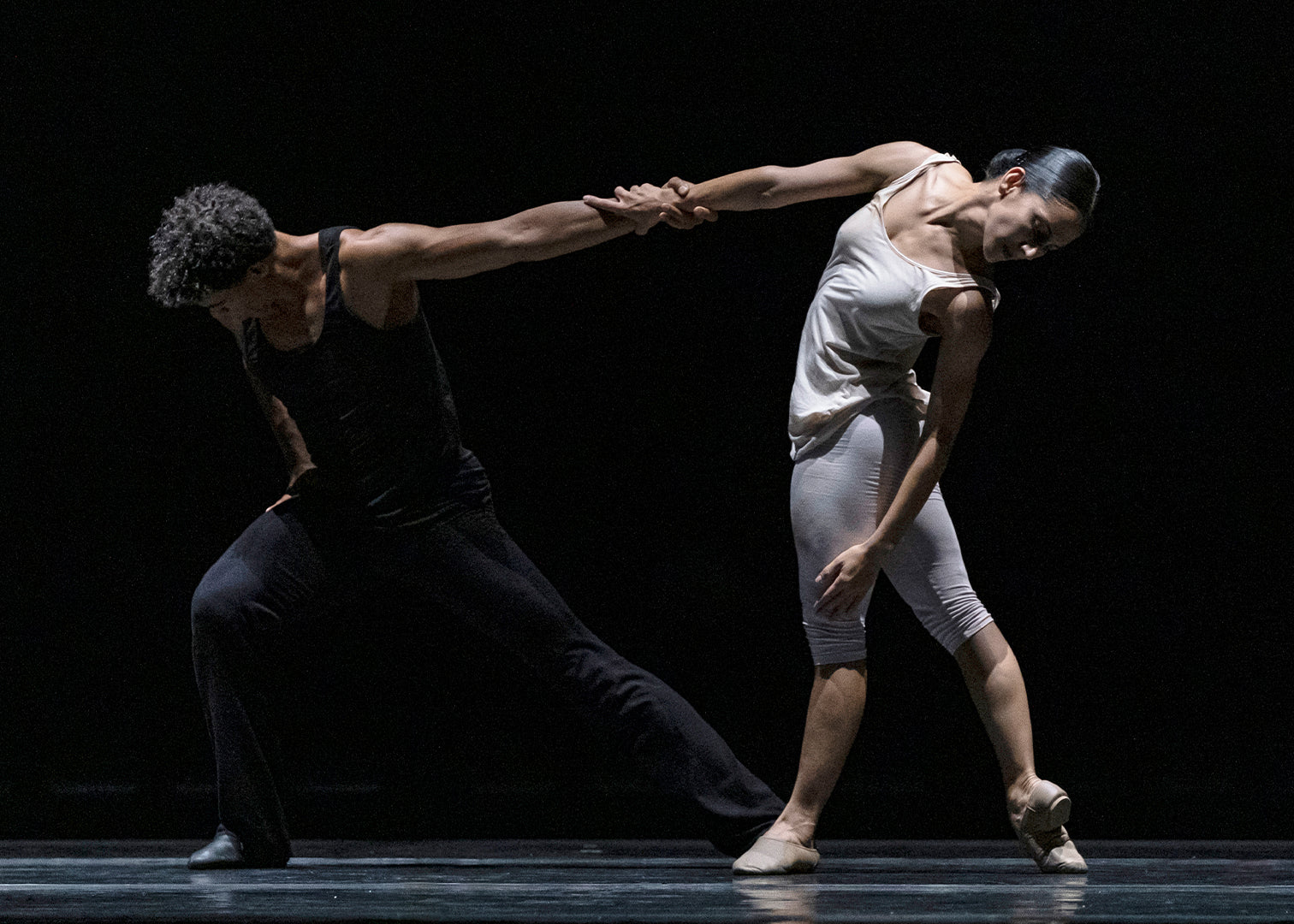“1984”
Northern Ballet
Edinburgh Festival Theatre, Edinburgh, Scotland, March 31 - April 2, 2016
Northern Ballet's brilliant new adaptation, directed and choreographed by Jonathan Watkins, is an exercise in minimalism and restraint. And it is as savage in tone as it is visually incredible, with an immense large-scale set and costumes by Simon Daw.
The Ministry of Truth's clockwork precision and rigid limbs, which become reminiscent of the fitness regime of Nazi Eugenics movement, are chilling, due in no small way to a troubling recent report in the
Spectator[note]Fraser Nelson,
“The return of Eugenics,” www.spectator.co.uk, April, 2016[/note] which suggests Eugenics are set to make a comeback. The ensemble work is exhaustive and hypnotic in its automaton-like repetition: the dancers at their sliding work stations seem like propaganda posters bursting into life with their slicked back hair and identical pale blue uniforms. When Winston meets Julia at the junk shop where he surreptitiously buys his diary, their more fluid, loose solos mark them as outsiders, and Julia's red sash is a stand-out feature.
Tobias Batley as the hero Winston Smith, striking out for individuality and rebellion, is a charismatic lead both strong and vulnerable, and his lover and heroine Julia (Martha Leebolt) a feisty, graceful equal. They seem as a dystopian Adam and Eve, ready to start the world over again. Their pas de deux, where they cast off uniforms and seem to melt into each other next to a fluorescent pyramid shaped tree, is at once sensual and heartbreaking, foreshadowing their downfall when the Thought Police take them into the torture chamber dubbed Room 101.
But the peripheral characters are just as fascinating—Mr Charrington, the oleaginous but sharply dressed junk shop owner, portayed by Mlindi Kulashe, always seems to dance at a slight angle, suggestive of nefarious thoughts; whereas O'Brien (Javier Torres) the Inner Party leader and by far the most unreliable character who draws Winston in, has a seductive flow to his high-kicking solos: slick, glamorous and Machiavellian.
In Oceania, the Proles, underpaid labourers ignored by The Party, represent an alternative way of living, antiquated in sepia tones—in rich contrast to the efficient modernist lines of the others. They dance smaller discreet steps. Victoria Sibson's unnamed woman with a peasant bandana and tender traditional balletic steps seems motherly—a representation of the matriarch now missing in Winston's life—and a poignant reminder of when things were simpler.
Integrated into the choreography is the stunning state-of-the-art multi-media by Andrzej Goulding— massive screens with Big Brother's staring, rarely blinking eyes and gold fists clenched alongside slogans like ‘HATE’ fizzing and crackling into life. Alex Baranowski's majestic live score played by the Northern Ballet Sinfonia has elements of Schoenberg, Rachmaninoff and more recent work from Michael Nyman's
The Cook, The Thief, His Wife and Her Lover soundtrack in its ominous clarinet work, brass, cello and drones which buzz discordantly like killer bees. But the drums are getting louder—the sound of “a boot stamping on a human face—forever” as Orwell had it—the nightmare of a hellish eternity.
However, what is most striking is Watkins' steadfast refusal to soft-soap the narrative: here, there is no happy ending, nor ‘love conquers all’ message. The screens get brighter, becoming blinding to watch. This refusal to compromise only makes the young lovers' fate more devastating, so when Winston is finally broken by The Party, so too, is the audience.









comments